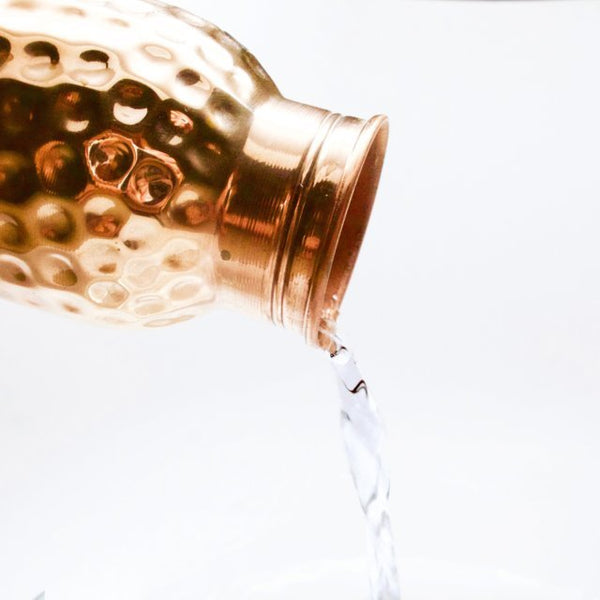
The presence of microplastics in the air breathed in the Turku archipelago has attracted the attention of researchers and demonstrated the urgency of research on the subject 1 .
This revelation highlights the importance of microplastics for the environment and health, considering microplastics in different environments – from water to soil, air and food chains 2 .
Studies on the origin of microplastics, divided into primary, intentionally produced, and secondary, microplastics resulting from the degradation of plastic particles, will help to achieve a deeper understanding. 2 . This understanding can be used to develop strategies to reduce and manage microplastics, which is essential to improve the use and handling of copper, plastics, bacteria, microplastics and bpa plastics.
Sources of microplastics
Sources of microplastics can be divided into several categories, covering both agriculture and more general environmental factors:
- Agricultural Microplastics:
- General Sources and Routes of Travel:
- Plastic Use and the Origin of Microplastics:
This classification helps to understand the multiple sources of microplastics and their potential impact on the environment.
Impacts of microplastics on the environment and health
The effects of microplastics on the environment and health are numerous and worrying. The impacts can be categorised as follows:
The environment:
- Aquatic life: microplastics can cause physical injury and chemical exposure to aquatic organisms. They can block the digestive tracts of organisms and transport pollutants and heavy metals in the environment 2 6 9 . Laboratory studies have shown a range of symptoms in aquatic organisms when exposed to microplastics 5 .
- Soil: The effects of microplastics on soil and its biota are still largely unknown, but it is reasonable to assume that the effects are comparable to those in the aquatic environment. 3 4 .
Health:
- Human exposure: People are exposed to microplastics daily through food, drinking water and breathing air. The amount of microplastics obtained and the size and shape of the plastic particles and the chemicals they contain affect the harmfulness of exposure. 4 6 7 .
- Potential health effects: microplastics can cause cardiovascular disease, cancer and affect the immune and nervous systems. Although the health risks are currently low, increasing exposure could change the situation 4 8 .
Studies show that the effects of microplastics are wide-ranging and can cause significant harm to both the environment and human health. However, more information is needed to reliably assess the potential health risks associated with microplastics and to develop effective strategies to reduce them (4)(7)(8).

Strategies to reduce microplastics
EU adopted restrictions and strategies to reduce microplastics:
- EU:n rajoitukset mikromuoveille 10:
- Limiting the use of microplastics in cosmetics, detergents and other products.
- The bans apply to microplastics smaller than 5 mm and nanoplastics smaller than 0.1 μm.
- The exemptions cover products in which microplastics remain permanently bonded, medical devices and scientific research.
- The restrictions will come into force in 2028, with different transition periods for different industries.
- The use of microplastics in professional applications, such as sandblasting or industrial coatings, is subject to restrictions.
- EU:n strategiat muovien käytön vähentämiseksi 11:
- By 2030, all single-use and reusable plastic packaging should be reusable or recyclable.
- A proposal to ban certain types of microplastics in cosmetics, toiletries and cleaning products by 2020.
- Restrictions on the use of single-use plastic bottles and containers were adopted in 2015.
- Innovatiiviset ratkaisut ja kuluttajien toimet 116:
- Improving waste management and promoting the use of natural fibres.
- Developing biodegradable alternatives to conventional plastics.
- Raising consumer awareness and actions such as choosing products with less packaging, avoiding products containing microplastics and disposing of waste properly.
- Biodegradable plastics and advanced waste management technologies.
- Waste prevention and optimising the circular economy are important ways to minimise environmental impacts.
Outlook for the future
Through this article, we have reviewed the environmental and health impacts of microplastics and copper, their multiple sources, and ways to reduce them. In the light of research, it is clear that the presence of microplastics in the environment, especially in the air of the Turku archipelago, is an urgent challenge that requires both national and international attention and action. Strategies to reduce microplastics, such as EU restrictions and innovative solutions, are a step in the right direction, but they require the involvement and commitment of all of us to more sustainable practices.
It is vital that we continue to research the effects of microplastics to gain a better understanding and develop more effective solutions. As consumers, we also need to take a critical look at our own role in microplastic emissions and take concrete steps to reduce them in our daily lives. This is not just a question of the environment, but also of the health and well-being of future generations.
FAQs
Which food contains microplastics? Research shows that drinking water is the largest source of microplastics, and microplastics are found in both bottled and tap water. Significant levels of microplastics have also been found in seafood, beer and salt. For comparison, 21 grams of microplastic is roughly equivalent to the weight of a three-euro coin.
What are the potential harms of microplastics? The potential harm of microplastics is not yet fully understood. However, laboratory studies have shown that aquatic organisms can suffer a range of symptoms when exposed to microplastics. It is important to note that the exposure levels used in the laboratory may be higher than in nature, so laboratory results cannot be used to directly infer harmfulness in the natural environment.
Where do microplastics come from? Microplastics can arise from a variety of sources, such as synthetic fibres that come off clothing, transport, microplastics in cosmetics, industrial plastic pellets, paints and coatings. So far, there is only limited research data available on the environmental and health impacts of microplastics.
How can I reduce the amount of microplastics?
If you want to reduce the amount of microplastics, here are a few tips:
Opt for natural fibres and reduce the number of times you wash your clothes. Do not use fabric softener, as it may weaken the elasticity of the synthetic fibres.
Identifying ingredients in cosmetics can be challenging, but Nordic Swan products do not contain microplastics.
It is also important to collect cigarette butts, for example, so that they do not end up in the environment.
Drinking water is fermented with filters. Prefer glass or copper water bottles.
References
[1] – https://yle.fi/a/3-10552471
[2] – %C3%
[3] – https://mmm.fi/makera-2020/mikromuovit-maatalousmaassa-paastot-vaikutukset-ja-vahentaminen
[5] – https://www.vyl.fi/viherymparisto/lehdet/mikromuovin-lahteita/
[6] – https://h elda.helsinki.fi/items/5cdfb581-f118-4da7-807b-570227cdca35
[8] – https://biobagworld.com/fi/blog/muovijatteen-vaikutukset-ihmisen-terveyteen-2/
[9] – https://w ww.iltalehti.fi/kotimaa/a/088c77a8-c02d-4d20-ae6e-c68782681eff
[10] – https://ym.fi/-/eu-n-laajuinen-rajoitus-vahentaa-mikromuovien-paastoja-ymparistoon [11] – https://www.europarl.europa.eu/topics/fi/article/20180830STO11347/eu-n-strategia-muovijatteen-vahentamiseksi



